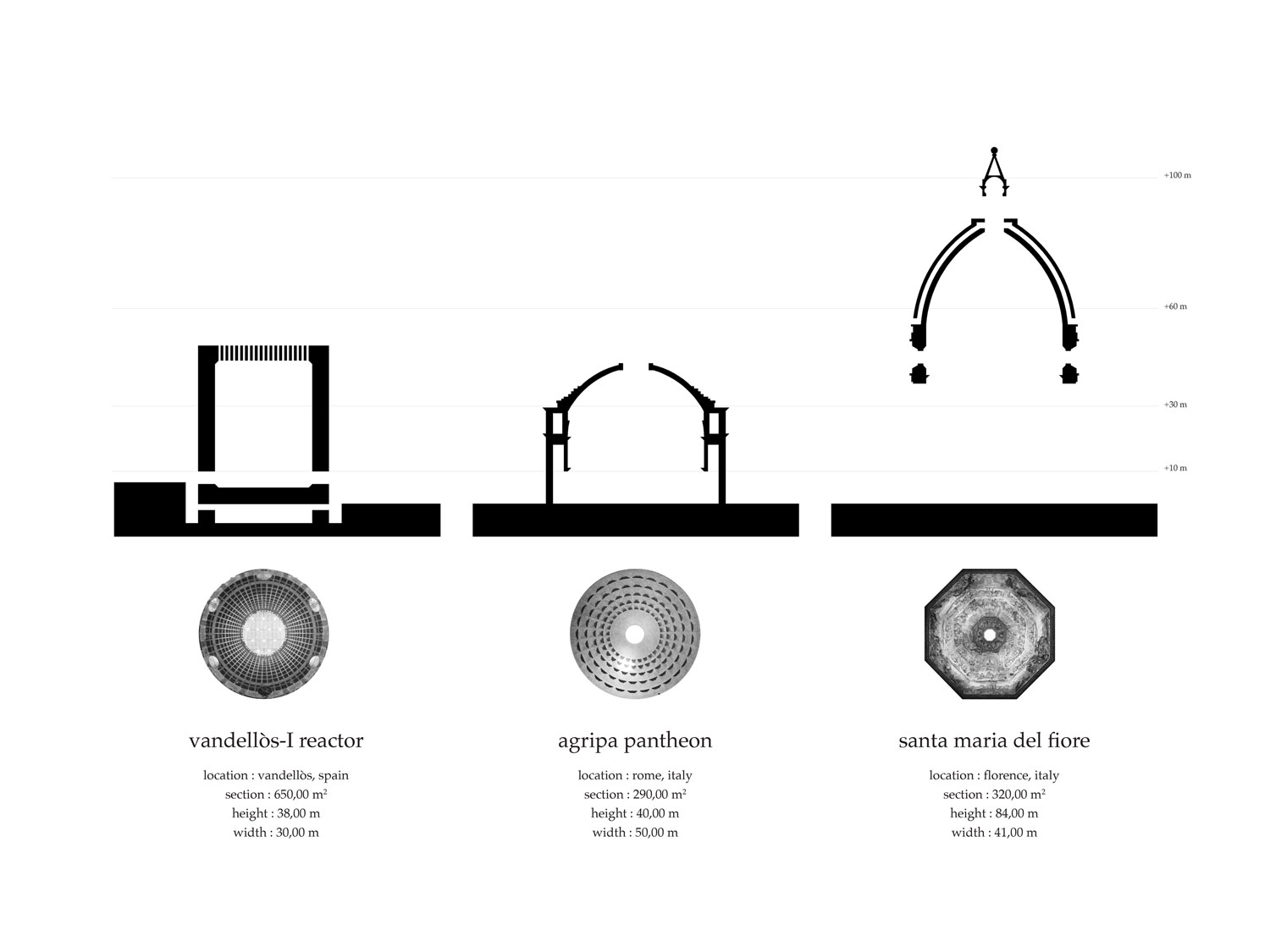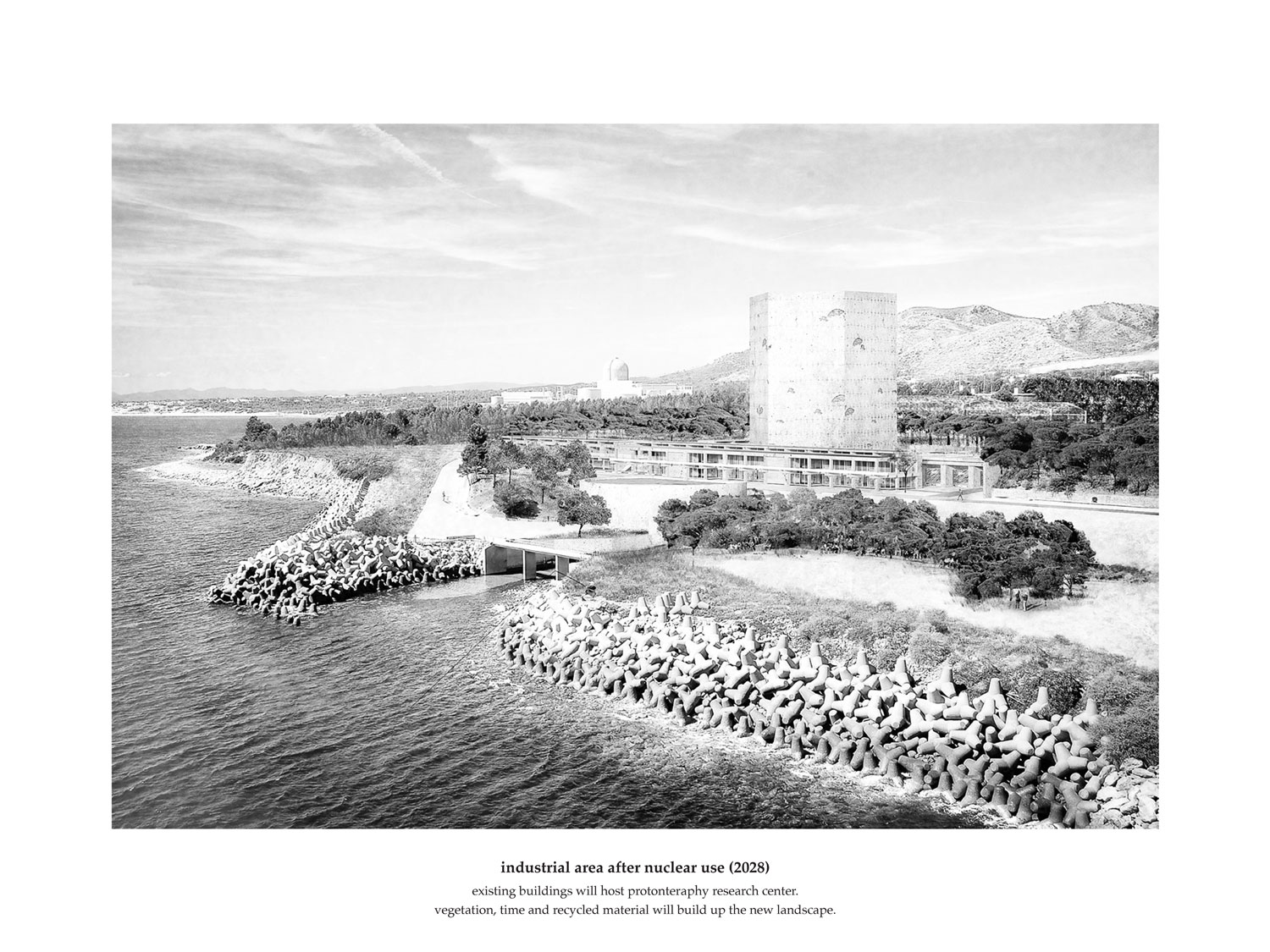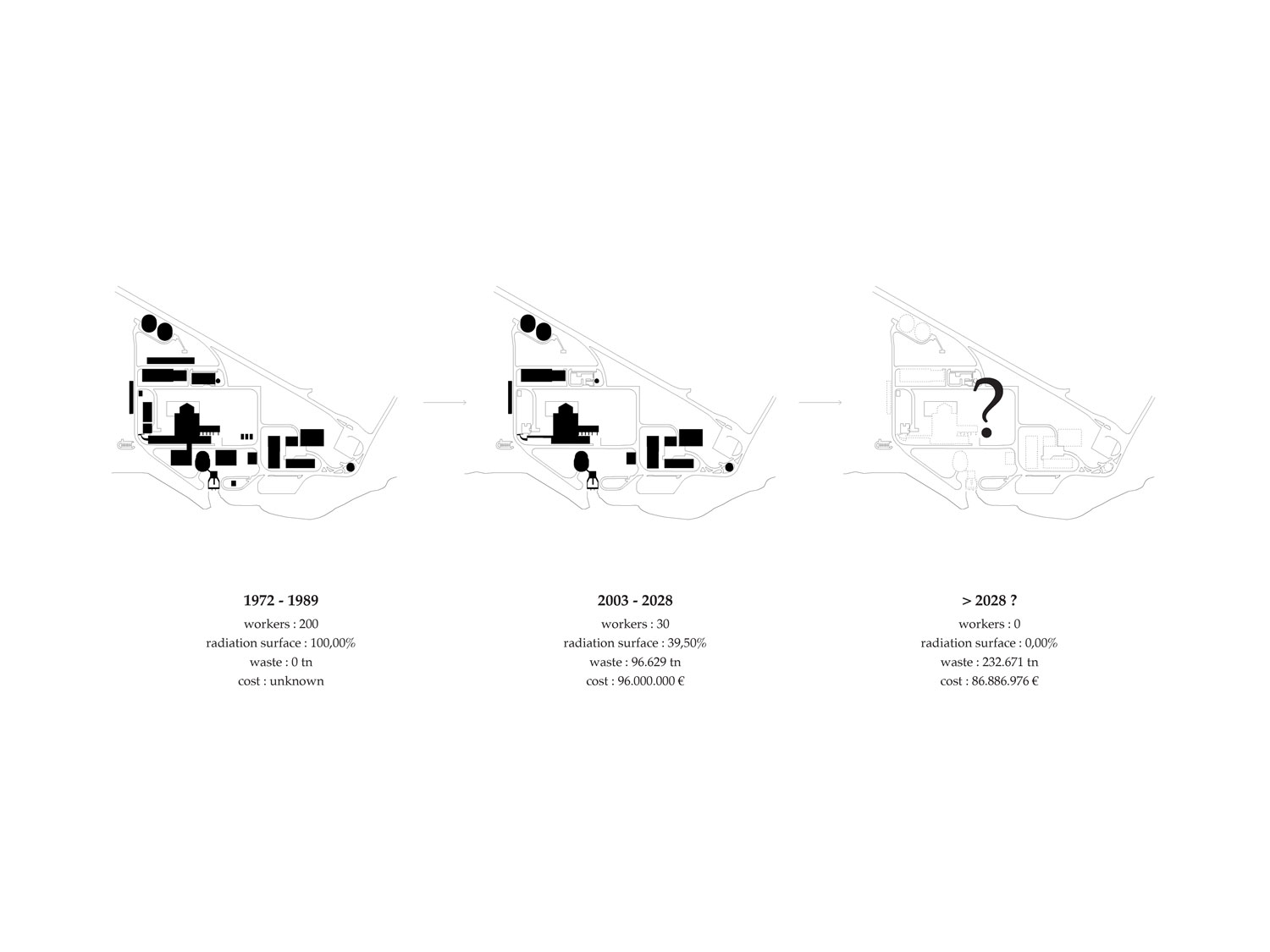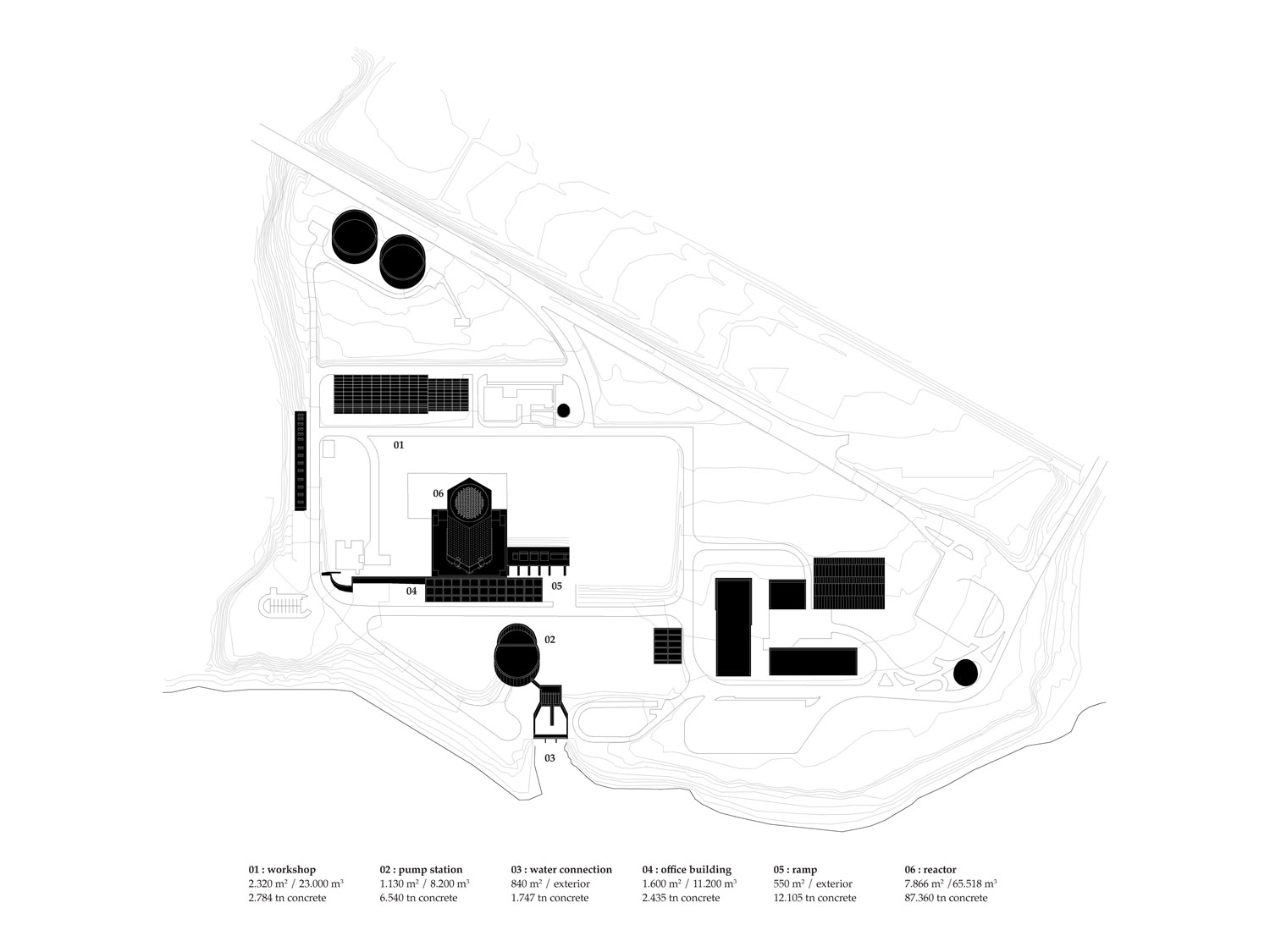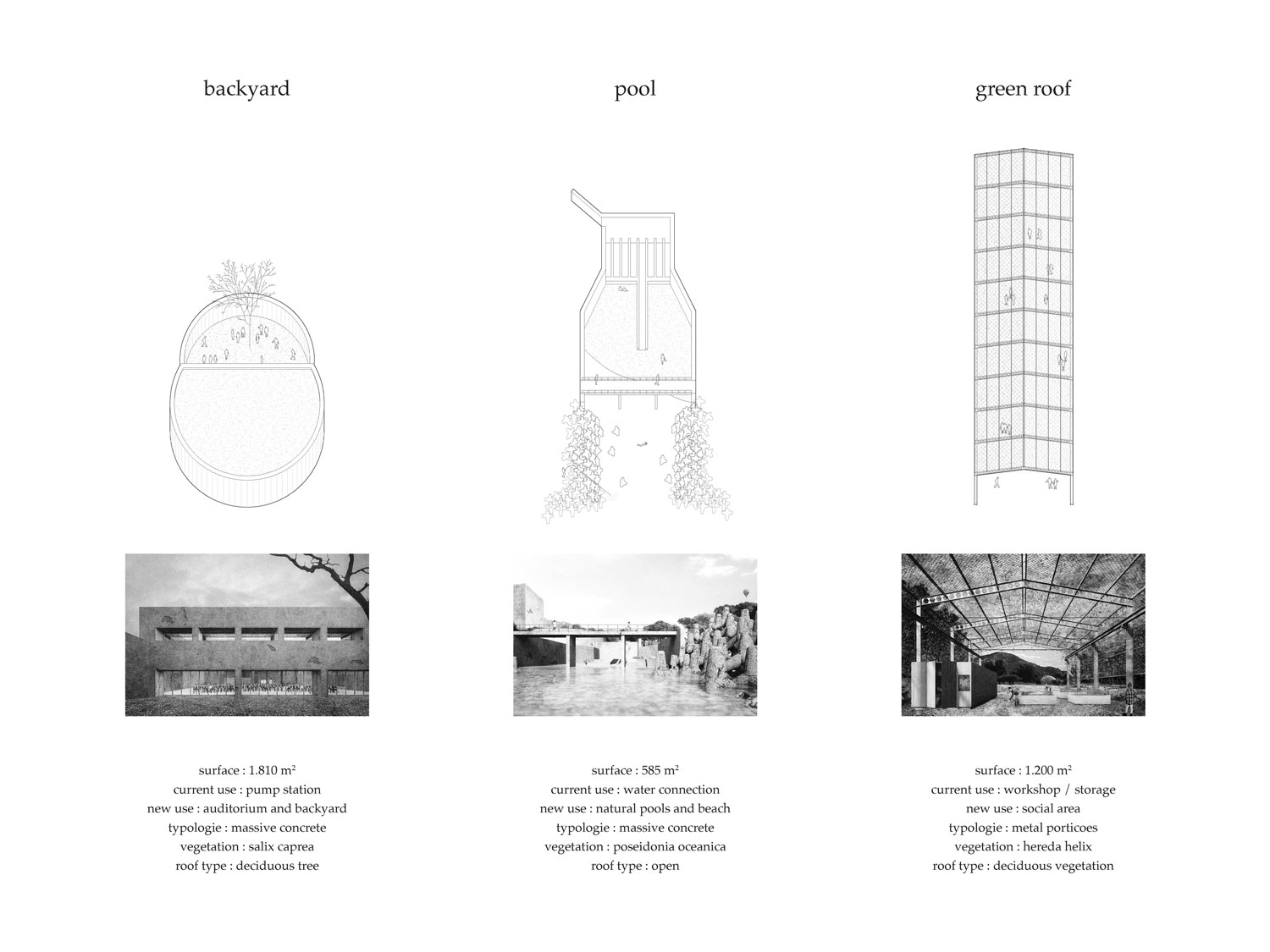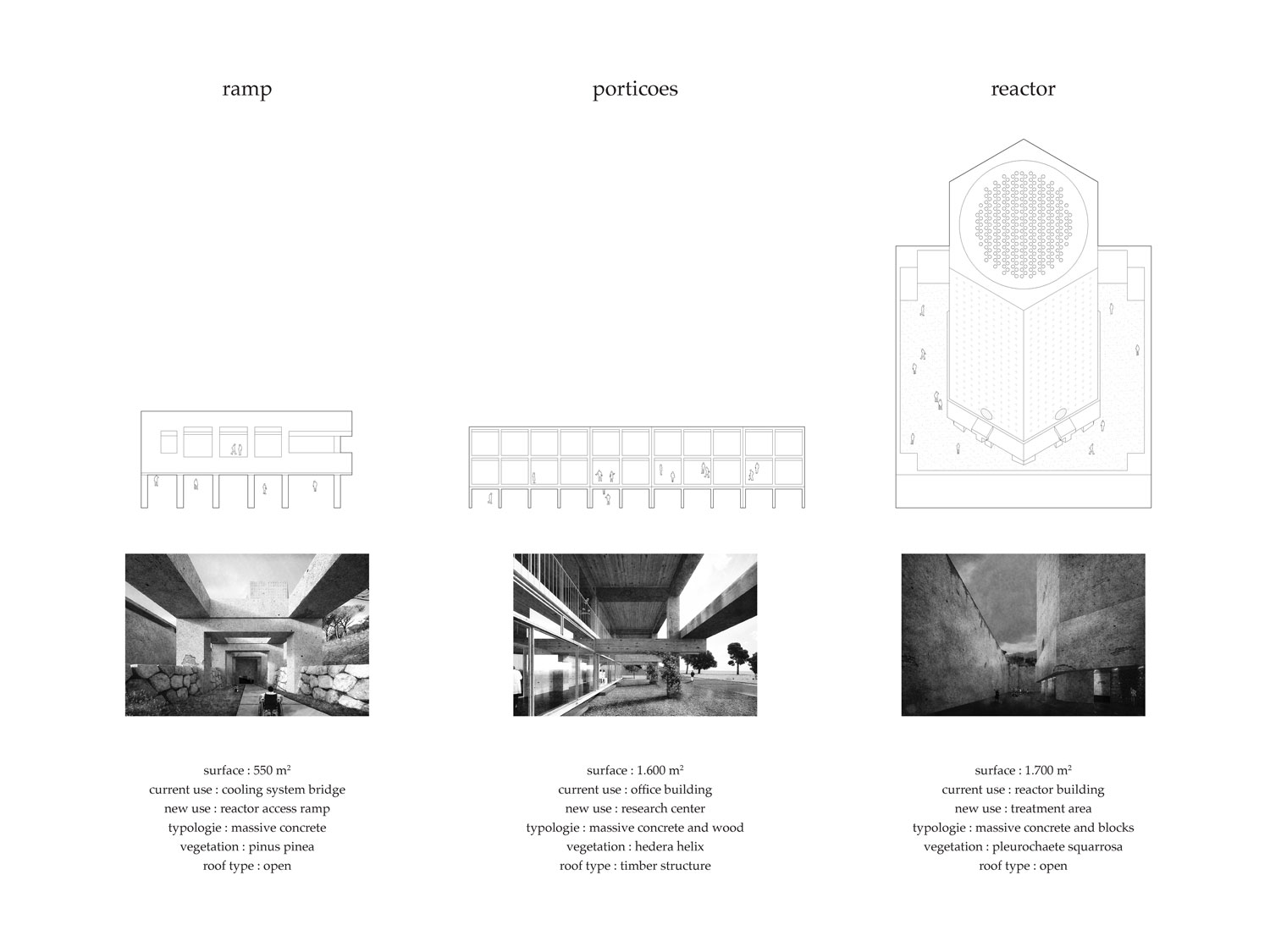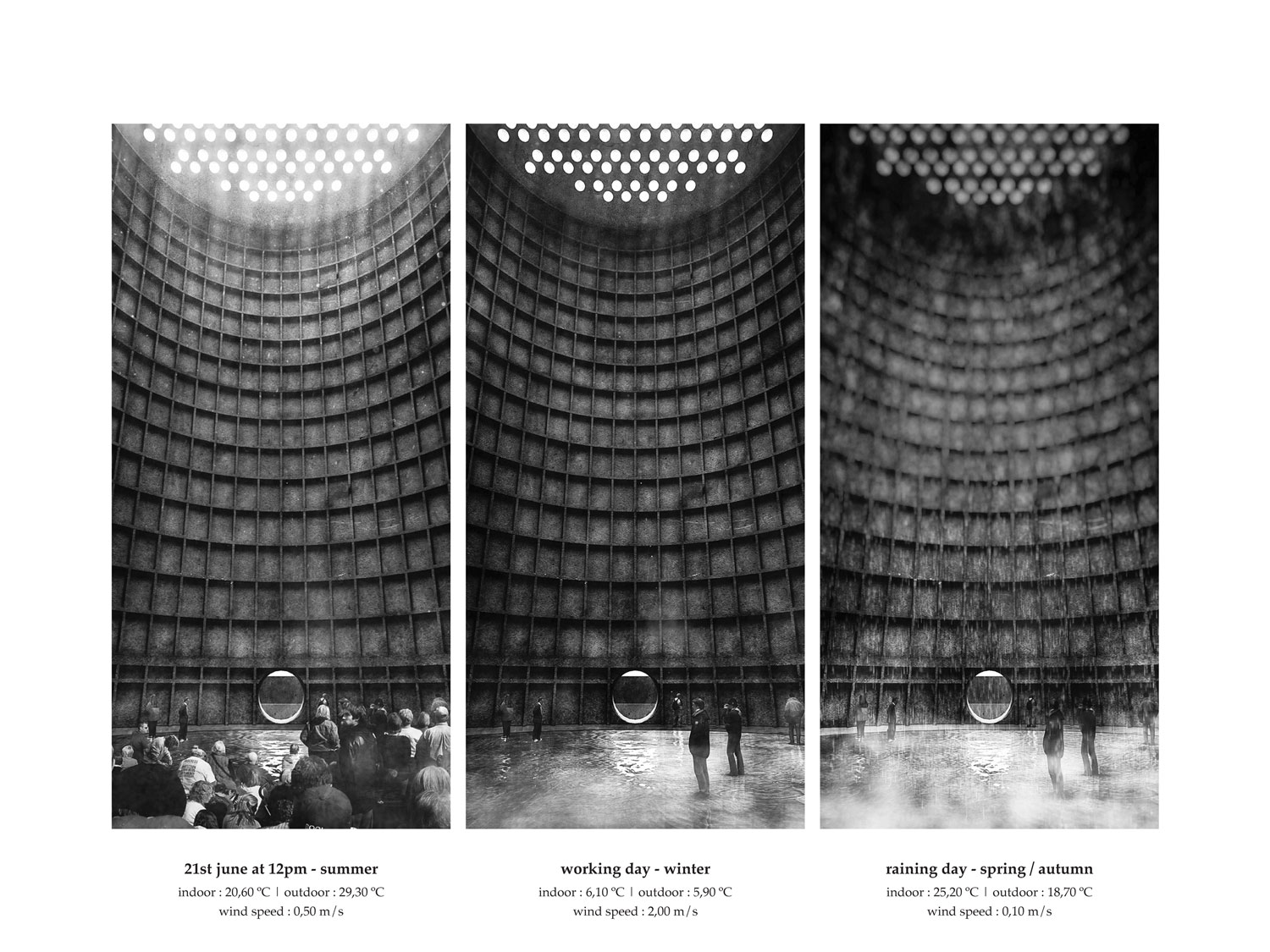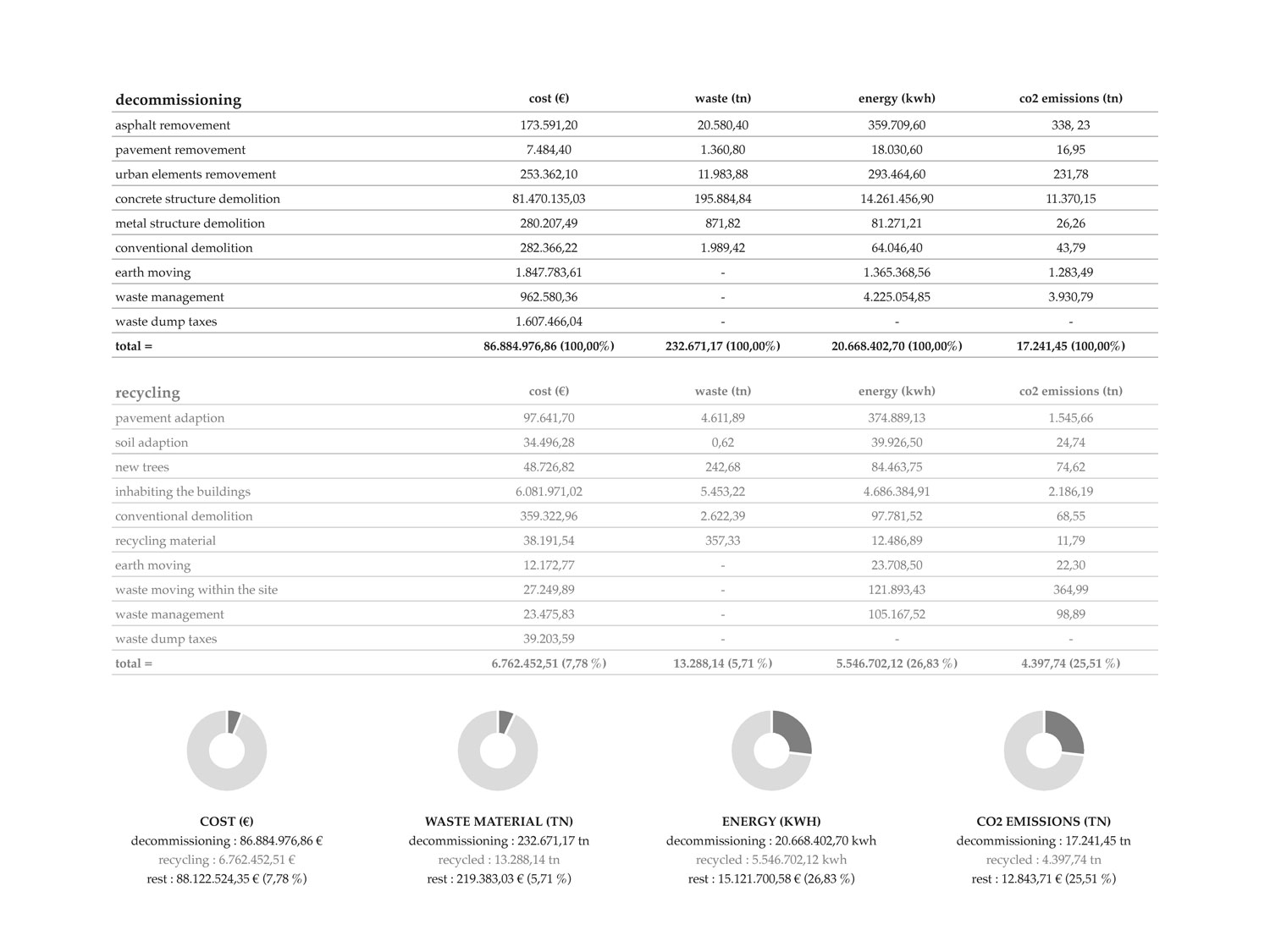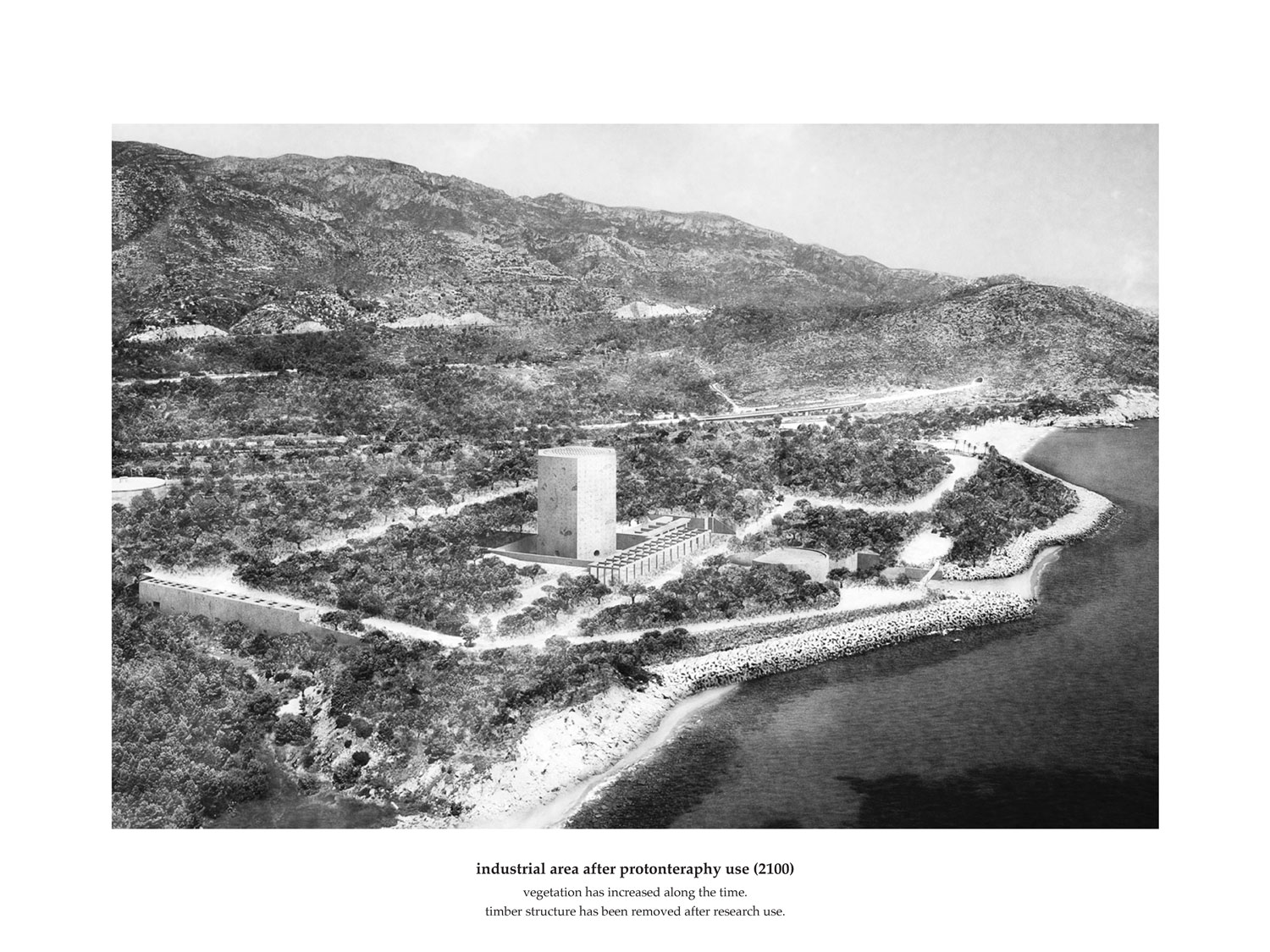1500-CGS-TGN.ES-2016
Client: ETSA Reus
Status: Academic
Location: Vandellòs, Spain
Coordinates: 40.9560694, 0.8778289
Climate: Mediterranean, Temperate
Materials: Concrete, Wood, Vegetal
Environment: Seaside
Visualizer: Studio
Budget: 6.611.676,63 €
Scale: 2.500 ㎡ Large
Ratio: 2.644,67 €/㎡
Types: Healthcare, Medical center, Refurbishment
Vandellòs-I Nuclear Power Plant (Tarragona, Spain) is going to be completely decommissioned for 2028. This project proposes a new vision in order to give a new chance to this industrial area located in the Mediterranean coast. After 17 years operating, this power plant shut off in 1989 due to an incident in its cooling system. The first phase of the decommission process (1998-2003) cost 100M$ and it generated more than 15.000 tones of conventional waste. Demolishing this infrastructure we will be increasing the waste generated and also losing an icon for the landscape and its memory as part of the territory evolution.
Recycling an abandoned structure
Protontherapy research center is proposed after recycling all existing structures in the power plant (> 21.098 m2). It is a medical procedure that uses a beam of protons to irradiate diseased tissue, most ofter in the treatment of cancer. The chief advantage over other types of radiotherapy is that as a charged particle the dose is deposited over a narrow range and there is minimal exit dose. No center exists in Spain because of the high cost of construction and maintenance. It needs some technical characteristics similar to the existing ones in a nuclear power plant. That means we can built the center for almost the same cost as decommission the plant. For example, high density concrete walls of 2m wide, areas for bunkers and a very good protection of radiation.
Controlling economic, material and energy resources
This transformation process uses around 92% of reused materials located within the field of study. They are for example, recycled concrete, crushed ceramic remains or even smelting of metal structures and asphalt. All the processes will be made in-situ because this action allow us to reduce the budget by 75%, as well as the energy consumed during the process (kwh) by 70%. The new structure material is wood over the existing concrete columns. It is considered a lightweight material and it does not generate CO2 emissions during the extraction process. These new interventions in wood allow to remove them easily in the future, leaving the existing concrete structure available to accommodate new purposes.
Replanting the post-industrial landscape
The planting of indigenous vegetation is proposed in order to build a new scenery after industrial use and to offset the CO2 emissions produced during the transformation phases. These species are for example: Pinus Pinea (0,29 tn/year), Populus Alba (1,26 tn/year) and Salix Caprea (1,37 tn/year). This vegetation will be used for the decommission tasks. To accommodate industrial spaces to the new uses and also to help removing the asphalt. Time, vegetation and atmospheric agents will reclaim this natural landscape built over the industrial layer we found. This project allows us to change the perception that popularly we have about this place. It is known to be cancer-causing; however, we present this place as an opportunity to be turned into a center to treat them.
